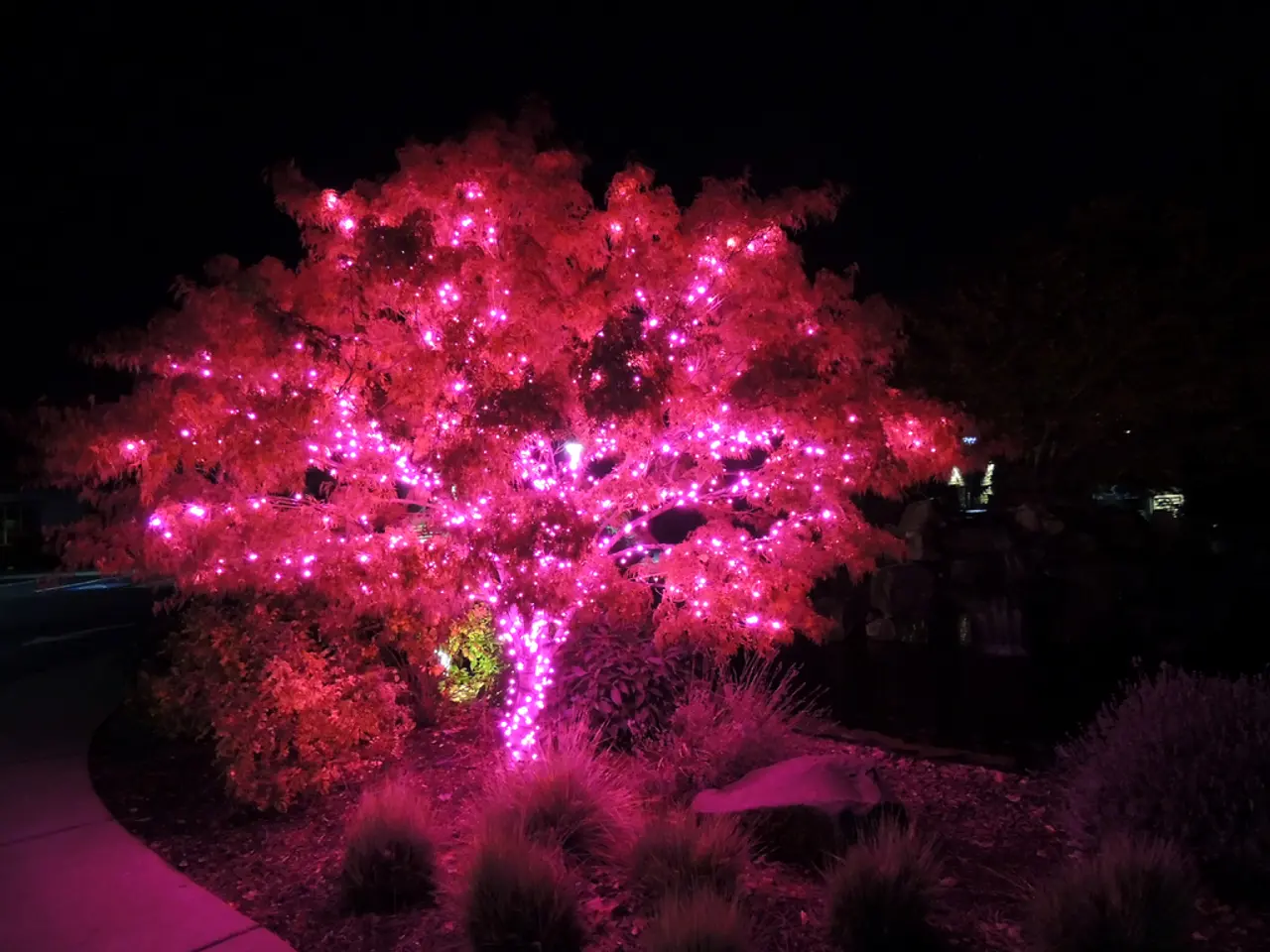Strategies for Transforming Your Nighttime Garden (Revealed: It's Not All About Solar-Powered Stakes)
Transform your garden from a regular daytime space into an enchanting haven after dark, with these top tips for creating a magical nighttime escape.
1. Combine Different Light Sources
Layer your lighting for a more polished and complete garden. Dot small lights along pathways to guide visitors and add uplight to trees or bushes to illuminate their silhouettes. Use lanterns and string lights around seating areas to create a cozy, glowing ambiance (1).
2. Embrace Warm Light Tones
Opt for soft, warm light tones to create a tranquil atmosphere ideal for relaxation. Look for LED bulbs labeled "warm white" or around 2700K on the color chart to achieve that golden, relaxing glow (2).
3. Show Off Key Garden Features
Spotlight or ground light selected elements like beautiful trees, unique sculptures, or water features to make them stand out at night and draw attention (3).
4. Motion-Sensing Lights for Safety & Energy Efficiency
Install motion-sensor lights in dark areas or frequent traffic points to illuminate only when needed, providing added security and saving energy (4).
5. Grow Night-Blooming Plants
Add a natural touch by incorporating plants that bloom during the night. White flowers and plants with silver leaves reflect light best, making them eye-catching even without additional lighting (5). Consider moonflowers, night-blooming jasmine, evening primrose, four o’clocks, and honeysuckle for their scented and atmospheric qualities (15).
6. Illuminate Water Features
Use floating lights to create a mesmerizing reflection on pools or ponds, adding a touch of romance and calm to your outdoor space (6).
7. Incorporate Fire Elements
Firepits, chimineas, and tabletop bowls filled with fire provide warmth and a flickering glow, perfect for chilly evenings (7).
8. Expand Beyond Solar Stakes
While solar stake lights are easy to use, mix things up with different lighting options like hanging lights, wall lights, or battery-powered lanterns for variety (8).
9. Illuminate Seating Areas
Ensure your benches or patio seating are well-lit with lanterns on tables or string lights above to create a welcoming, inviting atmosphere (9).
10. Use Shadows for Drama
Create artistic shadows by aiming lights low on the ground or using downlighting from above to mimic moonlight, adding texture and visual interest to your garden (10).
11. Choose Colored Lights Sparingly
Add pops of color with carefully placed LED lights for a unique, stylish effect. However, avoid going overboard with multiple colors to prevent the space looking cluttered (11).
12. Keep Cords and Fixtures Discreet
Hide unsightly wires and bulky fixtures behind plants or gently bury them under the soil to maintain your garden's clean, uncluttered aesthetic (12).
13. Use Interesting Lanterns
Select striking lanterns in various shapes, materials, and colors to enhance your garden's aesthetic appeal (13).
14. Downlighting from Above
Mount lights above trees, walls, or pergolas to create a soft, warm glow mimicking moonlight, ideal for lighting larger areas (14).
15. Low-Glare Fixtures
Select fixtures with covers, hoods, or frosted lenses to soften the light and prevent glare, maintaining a cozy, relaxing atmosphere in your garden (15).
Expert Advice: Invest in a mix of night-blooming plants like Moonflowers, Night Blooming Jasmine, Evening Primrose, Four O’Clocks, and Honeysuckle to add natural fragrance, visual appeal, and support for night pollinators. Enjoy an amazing garden experience that's both stunning and enchanting under the moonlight.
An ideal way to elevate your home-and-garden lifestyle is by incorporating night-blooming plants into your outdoor-living space, such as moonflowers, night-blooming jasmine, evening primrose, four o’clocks, and honeysuckle, which not only provide natural beauty but also support night pollinators (5). Additionally, employing low-glare fixtures like those with covers, hoods, or frosted lenses can help maintain a cozy, relaxing ambiance while subtly illuminating key elements in your garden, such as trees or water features (14 & 15).







